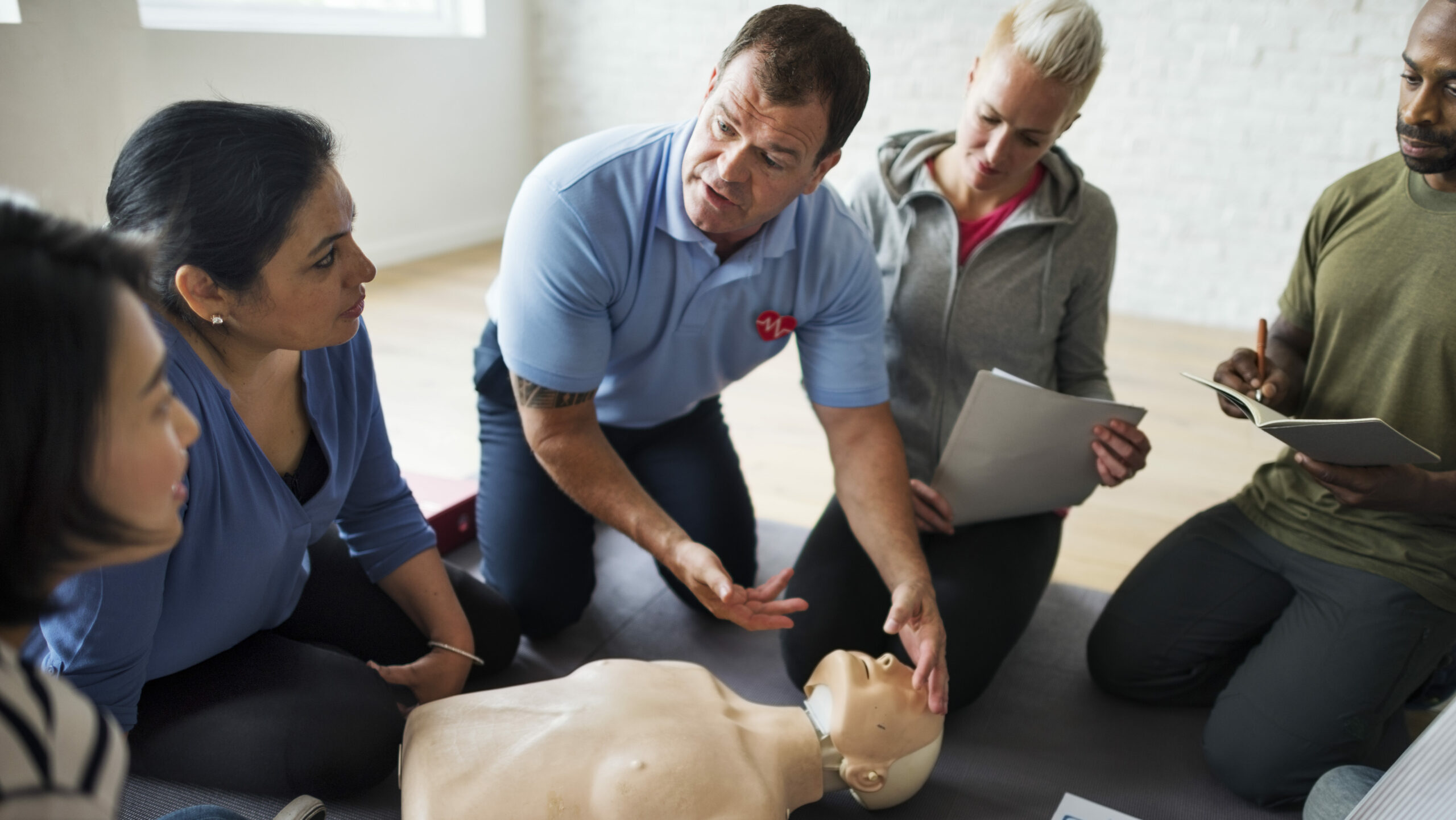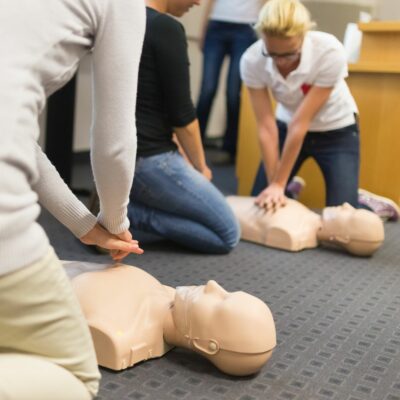Introduction
In a world where mishaps can occur at any moment, understanding exactly how to react efficiently can be the distinction in between life and fatality. Cardiopulmonary resuscitation (CPR) is an important skill that every person must take First Aid Course Tullamarine into consideration finding out. However with so many options available, navigating the world of mouth-to-mouth resuscitation programs can really feel overwhelming. So, which one is ideal for you? This write-up intends to guide you with the different mouth-to-mouth resuscitation courses available, assisting you pick the very best suitable for your needs.
Understanding CPR and Its Importance
What is CPR?
Cardiopulmonary resuscitation (CPR) is an emergency treatment done on individuals whose heart has stopped defeating or that have actually discontinued breathing. It involves upper body compressions and rescue breaths to maintain blood flow and oxygenation up until innovative medical help arrives.
Why is CPR Important?
The relevance of mouth-to-mouth resuscitation can not be overemphasized. Statistics reveal that immediate mouth-to-mouth resuscitation can increase or even triple a sufferer's chances of survival after cardiac arrest. Knowing CPR not only outfits Midland CPR training you with the skills to save lives however also enhances your confidence in emergency situations.
When Needs to You Utilize CPR?
CPR should be initiated when a person is unresponsive, not breathing normally, or exhibiting indications of severe distress. Being able to identify these situations swiftly can conserve priceless minutes.
Navigating the World of CPR Courses: Kinds Available
Basic Life Assistance (BLS) Courses
What is BLS?
BLS programs are created for healthcare providers and professionals that need to keep qualification in standard life assistance techniques. These courses cover necessary abilities such as high-grade chest compressions, respiratory tract monitoring, and utilizing an Automated External Defibrillator (AED).
Who Should Take BLS Courses?
If you're a health care employee, caretaker, or somebody looking to boost their clinical understanding, a BLS training course may be proper for you.
Heartsaver ® CPR/AED Courses
What are Heartsaver ® Courses?
The Heartsaver ® program uses courses customized for nonprofessionals. It concentrates on grownup, kid, and baby mouth-to-mouth resuscitation strategies along with AED usage.
Who Should Consider Heartsaver ® Courses?
These courses are excellent for educators, trainers, moms and dads, and any individual in charge of others' security that might require to act in an emergency situation.
First Aid Training course vs. Emergency Treatment and CPR Course
What Does an Emergency treatment Course Cover?
An emergency treatment course commonly covers the essentials of treating injuries such as cuts, burns, fractures, and choking events without focusing on resuscitation methods.


Why Combine Emergency treatment with CPR Training?
Combining first aid training with a mouth-to-mouth resuscitation course furnishes you with extensive emergency situation response skills. By recognizing both first aid and resuscitation techniques, you'll be better prepared to manage different emergencies.
Advanced Heart Life Assistance (ACLS)
What is ACLS Training?
ACLS training surpasses fundamental life assistance by including sophisticated medical abilities like providing drugs and taking care of respiratory failure.
Who Requirements ACLS Certification?
ACLS accreditation is frequently needed for health care professionals operating in vital treatment setups such as medical facilities or emergency situation rooms.
Choosing the Right Course for You: Elements to Consider
Your Level of Experience
Before enrolling in any kind of course, evaluate your current degree of understanding pertaining to first aid and mouth-to-mouth resuscitation strategies. Novices may benefit from starter programs like Heartsaver ®, while experienced individuals might go with more intensive training like BLS or ACLS.
Your Responsibilities
Consider your duty in your neighborhood or workplace. If you are in charge of others' safety and security-- like a train or educator-- you may intend to invest time in detailed first aid and CPR training.
Course Layout: In-Person vs. Online Options
In-Person Training Advantages
- Hands-on experience Immediate responses from instructors Networking opportunities
Online Training Advantages
- Flexibility Convenience Often less costly
Understanding Certification: What You Need to Know
Duration of Certifications
Most accreditations last between 2 to 3 years before requiring renewal; however, this differs by organization.
Recognized Organizations Offering Certification
Several companies supply reliable certification programs:
- American Heart Organization (AHA) Red Cross National Safety Council (NSC)
Finding Quality Training Providers
Researching Local Options
Look right find first aid course in Adelaide into local healthcare facilities or recreation center supplying first aid courses to find practical choices near you.
Online Resources
Many organizations provide on the internet training components that supply qualification upon completion-- an excellent choice if time restraints are an issue.
Costs Associated with Numerous Courses
|Course Kind|Average Price|| ---------------------|----------------|| Standard Life Support|$100 - $150|| Heartsaver ®|$50 - $80|| First Aid Only|$60 - $100|| ACLS|$200 - $300|

How to Plan for Your Course
Pre-Course Recommendations
Before participating in course:
Review any type of provided materials. Wear comfy clothing. Bring any kind of needed products noted by your instructor.What Happens After Completion?
After effectively completing your picked program:
You'll obtain an accreditation card. Keep it updated according to your carrier's guidelines. Apply what you have actually discovered frequently with practice sessions if possible!Common False impressions Concerning First Aid and CPR Training
Misconception 1: Just Health Care Professionals Required This Training
This can not be additionally from the reality! Every person can gain from recognizing just how to carry out emergency treatment or do CPR!
Misconception 2: I'll Never ever Need to Use It
Emergency circumstances arise unexpectedly; being prepared is always wise!
FAQs Concerning Emergency treatment Certificates & Courses
How long does it require to complete a common emergency treatment course? A lot of emergency treatment training courses take about four hours but can vary depending on web content depth.
Will I get a certification after completing my course? Yes! The majority of respectable companies give certificates upon effective completion.
How commonly do I need to restore my certification? Usually every 2 years; talk to your licensing organization.
Can I take these courses online? Definitely! Lots of companies supply on the internet alternatives permitting flexibility.
Are there age requirements for taking these courses? Normally no age restriction exists; however, adult consent could be needed under specific circumstances.
Do companies need staff members to have these certifications? Numerous employers do favor personnel trained in first aid/CPR-- it shows commitment in the direction of work environment safety!
Conclusion: Your Trip Begins Now!
With many choices readily available when it boils down deciding on which course matches best-- whether it's Standard Life Support (BLS), Heartsaver ®, Advanced Cardiac Life Support (ACLS), and even just basic Emergency treatment-- the crucial takeaway stays clear: Taking aggressive steps in the direction of improving your data base around first aid & & cardiopulmonary resuscitation will ultimately encourage YOU! By investing time right into navigating the globe of CPR programs responsibly today guarantees readiness tomorrow-- because every 2nd matters throughout emergencies!